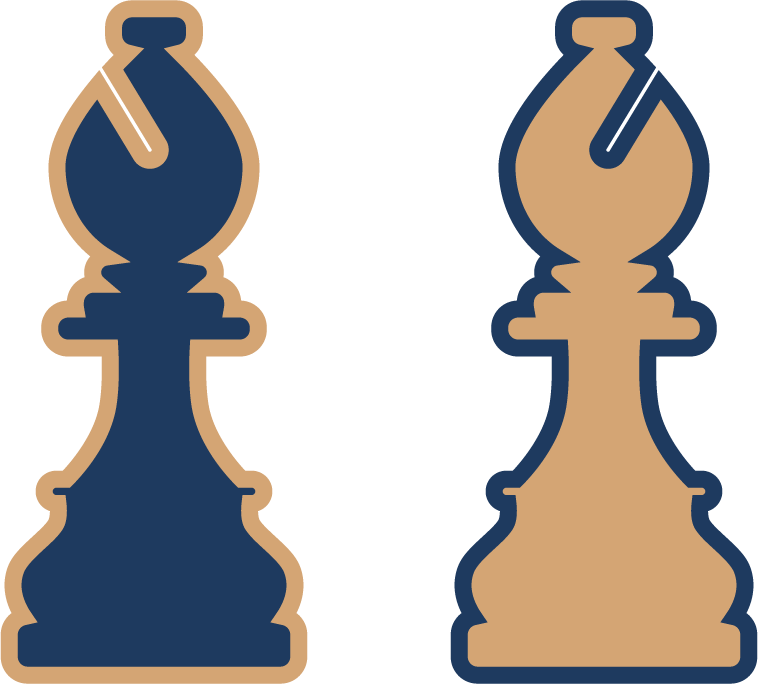Are you working harder but accomplishing less? In today’s fast-paced world, many people struggle with productivity despite putting in long hours. Meetings, distractions, and endless to-do lists often leave us feeling overwhelmed. According to Asana, productivity isn’t just about doing more—it’s about minimizing “work about work.”
Forbes highlights a counterintuitive truth: doing fewer tasks can actually boost productivity. Prioritization, focused work, and strategic automation are key to achieving better results. Tools like ActiveCampaign’s 14-day trial can help streamline workflows, while Cal Newport’s deep work philosophy emphasizes the importance of uninterrupted focus.
This article explores 12 actionable strategies and ways to help you overcome common productivity challenges. From managing decision fatigue, as seen in Obama’s approach, to mastering prioritization, these techniques are a fact that productive people use to help you work smarter, not harder, rather than just adding to your to-do list.
Key Takeaways
- Productivity is about minimizing unnecessary tasks, not just doing more.
- Meetings are a top distraction for 25% of employees.
- Prioritization and focused work are essential for success.
- Strategic automation can save time and reduce stress.
- Deep work philosophy emphasizes the value of uninterrupted focus.
Introduction to Productivity
Many people confuse busyness with being productive. True productivity is about achieving meaningful results and finding effective ways to manage your to-do list, not just filling your day with tasks. According to Asana, it’s the difference between actual work and “work about work”—the unnecessary tasks that drain your time and hinder peak productivity.
Laura Earnest’s framework highlights the distinction between efficient and effective work. Being efficient means doing things quickly, while being effective means doing the right things. For example, spending hours in meetings might seem productive, but it often leads to a 25% loss in actual output.
The planning fallacy, a common cognitive bias, makes people underestimate the time needed for tasks. This leads to missed deadlines and stress. To combat this, tools like the Eisenhower Matrix help prioritize tasks based on urgency and importance.
Decision fatigue, as highlighted in a Vanity Fair interview with Barack Obama, shows how too many choices can drain mental energy. Modern work environments add to this with frequent tool switches—Asana reports that employees switch tools nine times daily, disrupting focus.
Burnout is another major issue. Studies show that 40% of employees link burnout to their pursuit of success, with one in four experiencing it quarterly. Clarity in team goals, as seen in the Telfer School case study, can reduce this stress.
Finally, the Pareto Principle, or the 80/20 rule, reminds us that 80% of results often come from 20% of efforts. Vilfredo Pareto’s observation in economics applies perfectly to productivity—focus on what truly matters.
Prioritize Your Most Important Tasks
Not all tasks are created equal—some drive results while others waste time. To work smarter, focus on what truly matters. Laura Earnest’s MIT (Most Important Tasks) system is a great place to start. Identify 1-3 high-value tasks daily and tackle them first. This ensures you’re making progress on what counts.
Focus on High-Value Tasks
High-value tasks are those that deliver the most impact. For example, in email marketing, 20% of campaigns often generate 80% of revenue. This is the 80/20 rule in action. By focusing on these tasks, you can maximize results with minimal effort.
Use the Eisenhower Matrix
The Eisenhower Matrix helps you categorize tasks based on urgency and importance. It has four quadrants: – Urgent & Important: Do these immediately. – Not Urgent but Important: Schedule these. – Urgent but Not Important: Delegate if possible. – Not Urgent & Not Important: Eliminate these. This tool prevents “shallow work” traps and keeps you focused on what truly matters.
Apply the 80/20 Rule
The 80/20 rule suggests that 20% of your tasks drive 80% of your results. For instance, in healthcare, prioritizing patient care over administrative tasks can significantly improve outcomes. Use this principle to identify and focus on your most impactful activities.
Another helpful technique is “Eat the Frog,” where you tackle your most challenging task first. Pair this with the Pomodoro Technique—work in focused 25-minute intervals—to maintain momentum and avoid burnout.
Cultivate Deep Work for Maximum Focus
The ability to focus without distraction is becoming a rare superpower. Cal Newport defines “deep work” as uninterrupted concentration on cognitively demanding tasks—the opposite of “shallow work” like emails or meetings. Studies show that shifting between tasks drops IQ by 10 points, equivalent to missing a night’s sleep. To achieve more things done, consider effective ways to manage your to-do list and prioritize tasks.
Schedule Deep Work Sessions
Block 2–4 hours daily for deep work on your most important tasks, ideally during peak energy times. Tools like Clockwise automate calendar scheduling to protect these blocks. Asana’s “No Meeting Wednesday” policy proves structured focus time boosts output by 30%, allowing you to manage your to-do list more effectively and minimize distractions from emails.
Minimize Distractions
Create a distraction list: note interruptions (e.g., social media, coworker chats) and eliminate them. Noise-canceling headphones signal “do not disturb,” while apps like RescueTime track digital habits. For emails, use templates: “I’m in deep work until 2 PM—urgent? Call.”
Develop a Deep Work Routine
Train your brain for focus with “boredom training”—avoid phone use during downtime. Productive people often enter flow states by starting with a clear goal for the day (Gear Patrol’s 3-step method: clarify, eliminate, commit). Typeracer games can sharpen typing speed for faster execution of any task.
Master Time Management Techniques
Effective time management is the best way to achieve your goals as a busy person. By organizing your hours and tasks using a to-do list strategically, you can maximize productivity and reduce stress. Let’s explore proven methods to help you take control of your time.
Use the Pomodoro Technique
The Pomodoro Technique is a simple yet powerful way to manage your time. Work for 55 minutes, then take a 5-minute break. This rhythm keeps you focused and prevents burnout. Tools like Toggl Track can help monitor your progress and ensure consistency.
Implement Time Blocking
Time blocking involves scheduling specific hours for tasks on your calendar. Imperfect Foods uses this method to streamline operations. By dedicating blocks to high-priority tasks, you can minimize distractions and improve efficiency.
Track Your Time Effectively
Tracking your time is essential for identifying inefficiencies. Apps like Toggl Track provide insights into how you spend your hours. Forbes recommends protecting your mornings for deep work, ensuring you tackle the most important tasks first.
Parkinson’s Law states that work expands to fill the time available. By setting strict deadlines, you can avoid procrastination. Integrate the Eisenhower Matrix with your calendar to prioritize tasks effectively.
Context switching, like switching between nine tools daily, can drain productivity. Conduct a time audit using a spreadsheet template to identify and eliminate unnecessary tasks. This way, you can focus on what truly matters.
Break Tasks into Manageable Chunks
Breaking down large tasks can transform how you approach your work. When you divide complex projects into smaller steps, they become less overwhelming and more achievable. This method not only boosts efficiency but also helps you stay focused on your goals.
Set Small, Achievable Goals
Start by setting small, realistic goals. For example, if you’re writing a blog, break it into sections like research, drafting, and editing. The SMART criteria (Specific, Measurable, Achievable, Relevant, Time-bound) is a great way to ensure your goals are clear and actionable.
Use Task Breakdown Strategies
Tools like the Work Breakdown Structure (WBS) can help you organize tasks effectively. Stride Services used this method to develop Standard Operating Procedures (SOPs), streamlining their workflow. Similarly, GoSpotCheck automated repetitive tasks, saving time and reducing errors.
Avoid Overwhelm with Step-by-Step Plans
Creating a step-by-step plan is a practical way to tackle large projects. For instance, in software development, sprints divide work into manageable phases. This approach prevents burnout and ensures steady progress. Remember, perfection isn’t the goal—progress is.
Take Regular Breaks to Recharge
Taking breaks isn’t lazy—it’s essential for peak performance. Research shows that your brain operates in ultradian rhythms, needing rest every 90-120 minutes. Without breaks, glucose depletion can lead to fatigue and reduced focus.
Short, frequent breaks are more effective than long ones. The 5-5-30 system suggests a 5-minute break every 25 minutes, a 30-minute break after 2 hours. This rhythm keeps your energy levels steady throughout the day.
Understand the Importance of Breaks
Your brain needs downtime to process information and recharge. Studies on Japanese “forest bathing” show that nature breaks boost creativity and reduce stress. Similarly, “movement snacks”—short bursts of physical activity—improve focus and productivity.
Incorporate Short Breaks into Your Day
Use tools like Apple Watch stand reminders to prompt breaks. Avoid social media during breaks, as it can drain mental energy. Instead, try “productive meditation”—focus on a single thought or problem while walking or stretching.
Use Breaks to Boost Creativity
Creative ideas often emerge during incubation periods. Use lunchtime for learning sessions or brainstorming. A Pomodoro variation for parents includes 15-minute breaks to balance work and family needs. Remember, breaks aren’t wasted time—they’re an investment in your productivity habits, allowing a person to use much time more effectively.
Automate Repetitive Tasks
Streamlining your workflow can free up valuable time for high-impact work. Automation is a powerful way to reduce manual effort and focus on what truly matters. By identifying repetitive tasks, you can implement tools and strategies to make your work more efficient.
Identify Tasks for Automation
Start by analyzing your daily routine. Look for tasks that are repetitive and time-consuming, such as scheduling meetings or sorting emails. Tools like Calendly can automate appointment setting, while ActiveCampaign’s trial offers email marketing automation. These solutions save time and reduce errors.
Use Tools to Streamline Workflows
Platforms like Zapier and IFTTT allow you to connect apps and automate workflows. For example, you can set up a Zapier workflow to automatically save email attachments to Google Drive. Asana’s form automation features can also simplify project management by reducing manual data entry.
Save Time with Automation
Automation not only speeds up processes but also improves accuracy. In manufacturing, Robotic Process Automation (RPA) has reduced production errors by 30%. Similarly, CRM auto-tagging can streamline customer data management. Regularly audit your automation strategies to ensure they align with your goals.
While automation offers many benefits, avoid over-automation. Some tasks require a human touch, especially in creative or customer-facing roles. Balance automation with personal interaction to maintain quality and engagement.
Learn from Successes and Mistakes
Reflecting on your progress is a powerful way to improve your results. Whether you’re analyzing your habits, what went well, or identifying areas for improvement, such as managing emails effectively, this process helps you refine your strategies and achieve better outcomes as a person.
Analyze What Works
Start by reviewing your work using the After Action Review (AAR) methodology. This approach helps you understand what led to success or failure. For example, Toyota’s Kaizen philosophy emphasizes continuous improvement by analyzing every step of the process.
McKinsey’s success pattern analysis shows that identifying recurring positive results can guide future decisions. Similarly, a personal SWOT analysis helps you recognize strengths, weaknesses, opportunities, and threats in your work.
Adjust Strategies Based on Feedback
Feedback is essential for growth. Implement 360-degree feedback to gather insights from peers, managers, and subordinates. This way, you can make informed adjustments to your strategies.
Be cautious of the sunk cost fallacy—don’t stick to failing strategies just because you’ve invested time or resources. Instead, use A/B testing principles to experiment with new habits and approaches.
Continuous Improvement
Adopt a growth mindset, supported by neuroscience, to embrace challenges and learn from mistakes. Weekly reflection journal prompts can help you track progress and identify areas for improvement.
While best practices are useful, avoid over-reliance. Tailor strategies to your unique things and circumstances. This approach ensures you’re always moving forward, even when faced with unexpected challenges.
Plan for Unexpected Challenges
Unexpected challenges can derail even the best-laid plans. Whether it’s a sudden shift in project requirements or an unforeseen external event, being prepared is key. Tools like Asana’s scenario planning features can help you anticipate and mitigate risks before they escalate.
One effective way to prepare is by conducting a premortem exercise. This technique involves imagining that your project has failed due to potential distractions, such as missed emails, and identifying reasons why. It’s a proactive way to uncover hidden risks and address them early in your workday.
Anticipate Potential Issues
Using a risk matrix model can help you prioritize potential issues based on their likelihood and impact. For example, the FEMA emergency planning framework emphasizes identifying critical things that could disrupt operations. This approach ensures you’re ready for the worst-case scenario.
Monte Carlo simulations, often used in project management, provide insights into possible outcomes by running thousands of scenarios. This data-driven method helps you make informed decisions and allocate resources effectively.
Develop Contingency Plans
Contingency planning is about having a backup plan for when things go wrong. SpaceX’s iterative failure approach is a great example. By testing and learning from failures, they’ve built resilience into their processes.
In the construction industry, buffer time calculations are commonly used to account for delays. This ensures that projects stay on track even when unexpected issues arise. Over-planning, however, can lead to stagnation, so balance is crucial.
Stay Flexible and Adaptable
Flexibility is essential when dealing with the unexpected. The pandemic showed how remote work adaptations could keep businesses running. “If-then” planning, a strategy from cognitive psychology, helps you prepare for multiple outcomes without being rigid.
By staying adaptable, you can navigate challenges more effectively. Regularly review and update your plans to ensure they remain relevant. This proactive approach keeps you one step ahead, no matter what comes your way.
Become More Productive and Say No to Unnecessary Tasks
Learning to say no can transform your workflow and reduce stress. Many people struggle with overcommitment, leading to burnout and inefficiency. By setting clear boundaries and focusing on high-impact work tips, you can reclaim your day and achieve better results. Starting your morning with motivation and effective tips can further enhance your productivity.
Become More Productive by Setting Clear Boundaries
Warren Buffett’s 25-5 rule is a powerful strategy for prioritization. List 25 goals, then circle the top 5. Focus solely on these and avoid the rest. This approach ensures you dedicate your work to what truly matters.
Creating a “not-to-do” list is equally important. Identify tasks that drain your time without adding value. For example, limit unnecessary meetings by assessing their ROI using Asana’s meeting templates.
Focus on High-Impact Work to Become More Productive
Stephen Covey’s circle of influence concept emphasizes focusing on what you can control. Use the Eisenhower Matrix to categorize tasks by urgency and importance. This helps you avoid false urgency traps and stay aligned with your goals.
Sample email decline templates can help you politely say no to low-priority requests. For instance, “I’m currently focused on a high-priority project. Let’s revisit this next week.”
Delegate When Possible
Delegation is a skill that can save you time and energy. Tim Ferriss’ virtual assistant strategies show how outsourcing repetitive tasks can free up your schedule. Analyze the cost-benefit of delegation to ensure it’s worth the investment.
Nonviolent communication techniques can help you delegate effectively. For example, “I need your help with this task because it aligns with your expertise.” This approach fosters collaboration and clarity.
Conclusion: Embrace Productivity for Long-Term Success
Achieving long-term success requires a balanced approach to productivity. By implementing the 11 strategies outlined in this article, you can create a sustainable work routine that maximizes efficiency without leading to burnout.
Start with a 30-day habit formation roadmap. Focus on one strategy each week, such as prioritizing tasks or scheduling deep work sessions. This gradual approach ensures lasting change. As Gear Patrol’s creative focus example shows, consistency is key to mastering new habits.
Balance is crucial. While metrics can track progress, avoid fixating on them. Instead, focus on the lifetime value of your efforts. Regularly review your methods quarterly to adapt and improve.
Continuous learning is essential. Explore resources like Asana’s team clarity statistics to refine your approach. Remember, productivity isn’t just about doing more—it’s about doing what matters most.
Take the first step today. Implement these strategies and commit to a way of working that supports your goals. With dedication and the right tools, you can achieve long-term success and create a fulfilling work life.


